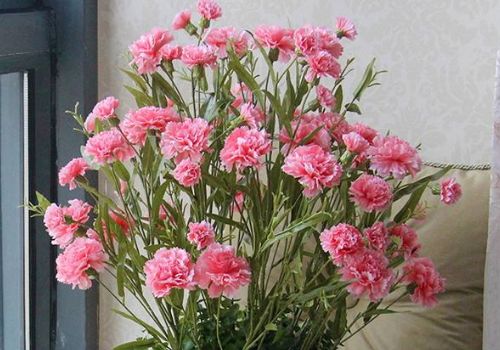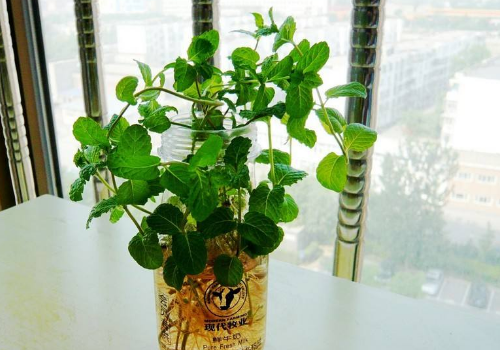Matters needing attention in winter management of Chinese wolfberry
Lycium barbarum is a kind of medicine for both medicine and food, which has a large market demand and high economic value, especially black wolfberry. Lycium barbarum is a perennial plant, which can be used for a long time, so in order to ensure the high yield and high quality of Chinese wolfberry every year, it is necessary to take relevant treatment measures, and the winter management of Chinese wolfberry is a very important point. Let's follow the editor to take a look at how Chinese wolfberry is managed in winter.

1. Cleaning up between gardens
Generally speaking, we need to clean up the garden after the wolfberry harvest. It is usually to clean up the dead branches, fallen leaves and weeds between the gardens, and it is best to pile up and burn them away from the Chinese wolfberry orchards, so as to reduce the incidence of diseases and insect pests in the coming year. Of course, if there are no contaminated leaves or fallen leaves of diseases and insect pests, we can also pile them into rabbits, which can also provide some nutrients for Chinese wolfberry. Finally, it is necessary to carry out disinfection and cleaning throughout the year, which can reduce the occurrence of diseases and insect pests at the root.
2. Pruning branches and leaves
After the wolfberry harvest, we also need to prune the branches and leaves, and it is much easier and safer to prune in winter than in other seasons. Generally speaking, the principle of pruning is to remove the weak and stay strong, that is, to prune the branches and leaves of diseases and insect pests, withered branches and old branches, to reasonably control the distance and number of trunk, main branches and branches, as well as incisions. Smooth, conducive to natural air drying, which can ensure the growth and germination of branches and leaves in the coming year. Pruned branches and leaves should also be treated, can be processed into feed, can also be directly burned.
3. Field management
The field management of Chinese wolfberry in winter is actually relatively simple, generally speaking, it is to take care of the Chinese wolfberry orchard. First of all, the branches and leaves of Chinese wolfberry are a kind of very high-quality feed, so we should pay attention to the harm of livestock to it. Of course, we can also prevent it by spraying chemicals. The second is to prepare for the cold, although the cold resistance of Chinese wolfberry is strong, but it is best to lay a layer of straw in the field, so as to avoid the impact of frost on Chinese wolfberry, but also play a role in keeping fat and moisturizing.
4. Water and fertilizer management
In order to increase the yield of Chinese wolfberry in the coming year, water and fertilizer management in winter is very important. First of all, the management of water and fertilizer in winter is to enable Chinese wolfberry seedlings to survive the winter smoothly and play a role in maintaining them; secondly, it can prevent the occurrence of some diseases and insect pests, enhance the overall immunity of Chinese wolfberry, and promote the flowering and fruiting in the coming year. Generally speaking, we mainly use rotten organic fertilizer for furrow application, and the amount of fertilizer used per plant is not more than 20 jin. The second is that watering should be carried out during the day and night freezing to maintain soil moisture, but to avoid stagnant water in the field.
The above is the winter management technology of Chinese wolfberry planting that the editor would like to introduce to you today. I hope I can help you. Generally speaking, many people will ignore the winter management in the process of planting, in fact, its impact on the yield and quality in the coming year is very important, so we must pay attention to it in the process of planting.
- Prev

What should be done after the carnation is sown and withered?
Carnations, which are planted by many people in life, are very beautiful. When will carnations be sown? What should I do after the flowers fade? When to sow carnations: pay attention to the fact that carnations are not heat-resistant and prefer a cool environment. They do not grow well at an air temperature of 30 ℃, and the germination temperature is about 20 ℃.
- Next

Can peppermint be cultured in water? how to cultivate in water?
Mint, this is a kind of plant, which is liked by many people and has a delicate fragrance, so can this mint be hydroponically cultivated? How to hydroponic culture: can peppermint be hydroponically cultured? Peppermint prefers warm, humid, sunny and rainy environments. The rhizome can germinate and emerge at 5-6 ℃.
Related
- Fuxing push coffee new agricultural production and marketing class: lack of small-scale processing plants
- Jujube rice field leisure farm deep ploughing Yilan for five years to create a space for organic food and play
- Nongyu Farm-A trial of organic papaya for brave women with advanced technology
- Four points for attention in the prevention and control of diseases and insect pests of edible fungi
- How to add nutrient solution to Edible Fungi
- Is there any good way to control edible fungus mites?
- Open Inoculation Technology of Edible Fungi
- Is there any clever way to use fertilizer for edible fungus in winter?
- What agents are used to kill the pathogens of edible fungi in the mushroom shed?
- Rapid drying of Edible Fungi

